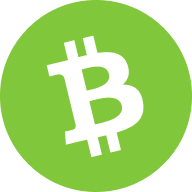BCH Treasury: How Blockchain is Revolutionizing Government Debt Tokenization
Introduction to BCH Treasury and Blockchain Tokenization
The convergence of blockchain technology and traditional finance is unlocking transformative opportunities, particularly in the tokenization of government debt. Blockchain networks, such as the Canton Network, are at the forefront of this innovation, exploring how tokenization can revolutionize financial systems. This article examines the role of blockchain in tokenizing real-world assets like U.S. Treasuries, highlighting its potential to enhance market efficiency, transparency, and institutional adoption.
What is Tokenization of Government Debt?
Tokenization is the process of converting real-world assets, such as government debt, into digital tokens on a blockchain. These tokens represent ownership or rights to the underlying asset and can be traded or used as collateral in financial transactions. For instance, a recent transaction on the Canton Network demonstrated how tokenized U.S. Treasuries could serve as collateral for USDC-backed financing, showcasing blockchain’s potential to modernize traditional finance.
Benefits of Tokenizing Government Debt
Real-Time Settlement: Blockchain enables near-instantaneous transaction settlements, eliminating delays associated with traditional financial systems that operate only during business hours.
Enhanced Transparency: Tokenized assets are recorded on an immutable blockchain ledger, providing clear visibility into ownership and transaction history.
Improved Market Efficiency: By reducing settlement times and enabling 24/7 financing, tokenization enhances liquidity and streamlines financial operations.
Collateral Mobility: Tokenized assets can be easily transferred and used as collateral, unlocking new financing opportunities.
The Role of the Canton Network in Blockchain Adoption
The Canton Network, developed by Digital Asset, is a privacy-focused blockchain designed to bridge the gap between traditional finance and decentralized blockchain infrastructure. Its recent demonstration of tokenizing U.S. Treasuries underscores its potential to address inefficiencies in the financial system.
Key Features of the Canton Network
Privacy-Centric Design: Unlike public blockchains, the Canton Network prioritizes privacy, making it ideal for institutional use.
Interoperability: The network integrates seamlessly with existing financial systems, allowing institutions to adopt blockchain without overhauling their infrastructure.
Institutional Participation: Major players such as Bank of America, Circle, and Citadel Securities have participated in initiatives on the Canton Network, signaling growing confidence in blockchain technology.
Institutional Adoption of Decentralized Finance (DeFi)
The tokenization of government debt is part of a broader trend of integrating decentralized finance (DeFi) principles into traditional financial markets. Institutions are increasingly recognizing blockchain’s potential to enhance efficiency, reduce costs, and unlock new financial opportunities.
Why Institutions Are Embracing Blockchain
Cost Savings: Blockchain reduces reliance on intermediaries, significantly lowering transaction costs.
Enhanced Security: The decentralized nature of blockchain makes it more resilient to cyberattacks and fraud.
Regulatory Compliance: Blockchain’s transparency helps institutions meet regulatory requirements more effectively.
Challenges in Scaling Tokenization Efforts
While the benefits of tokenization are substantial, several challenges must be addressed to achieve widespread adoption:
Regulatory Hurdles
Governments and regulatory bodies need to establish clear frameworks for asset tokenization. This includes addressing issues such as taxation, compliance, and investor protection.
Broader Institutional Adoption
For tokenization to reach its full potential, more financial institutions must adopt blockchain technology. This requires overcoming resistance to change and investing in the necessary infrastructure.
Cybersecurity Risks
As with any digital technology, blockchain is not immune to cybersecurity threats. Ensuring the security of tokenized assets is critical to building trust among users and institutions.
The Future of Blockchain in Traditional Finance
The tokenization of government debt and other real-world assets represents a significant step toward integrating blockchain into traditional finance. By addressing inefficiencies, increasing transparency, and enabling real-time settlement, blockchain has the potential to revolutionize financial markets.
Key Takeaways
The U.S. Treasury’s exploration of blockchain technology highlights the growing interest in tokenization.
The Canton Network’s privacy-focused approach positions it as a key player in bridging traditional finance with blockchain.
Institutional adoption of blockchain is accelerating, driven by the promise of cost savings, enhanced security, and operational efficiency.
Challenges such as regulatory hurdles and cybersecurity risks must be addressed to scale tokenization efforts.
Conclusion
The integration of blockchain technology into traditional finance is no longer a distant vision—it is unfolding now. The tokenization of U.S. Treasuries and other real-world assets is paving the way for a more efficient, transparent, and inclusive financial system. As institutions and regulators collaborate to overcome challenges, the future of blockchain in finance looks increasingly promising.
© 2025 OKX. Tätä artikkelia saa jäljentää tai levittää kokonaisuudessaan, tai enintään 100 sanan pituisia otteita tästä artikkelista saa käyttää, jos tällainen käyttö ei ole kaupallista. Koko artikkelin kopioinnissa tai jakelussa on myös mainittava näkyvästi: ”Tämä artikkeli on © 2025 OKX ja sitä käytetään luvalla.” Sallituissa otteissa on mainittava artikkelin nimi ja mainittava esimerkiksi ”Artikkelin nimi, [tekijän nimi tarvittaessa], © 2025 OKX.” Osa sisällöstä voi olla tekoälytyökalujen tuottamaa tai avustamaa. Tämän artikkelin johdannaiset teokset tai muut käyttötarkoitukset eivät ole sallittuja.


